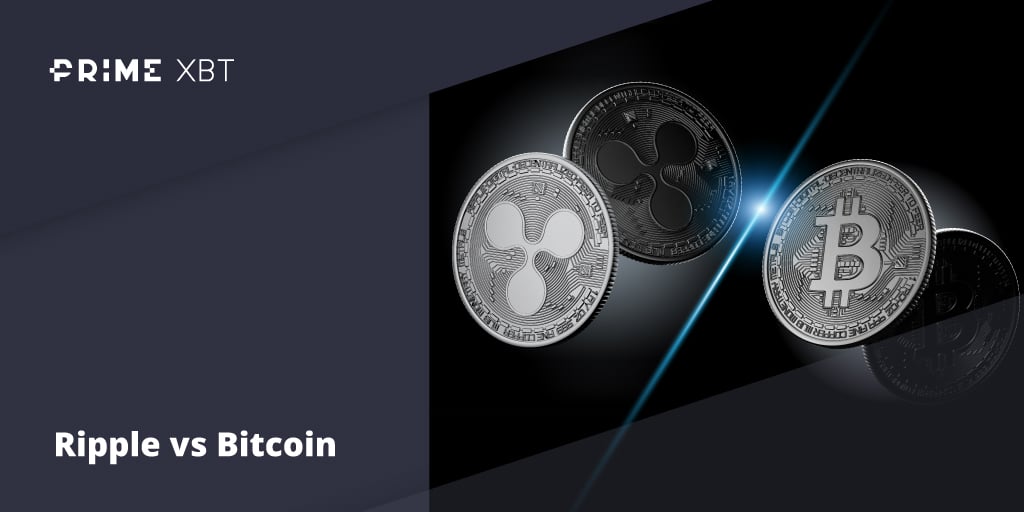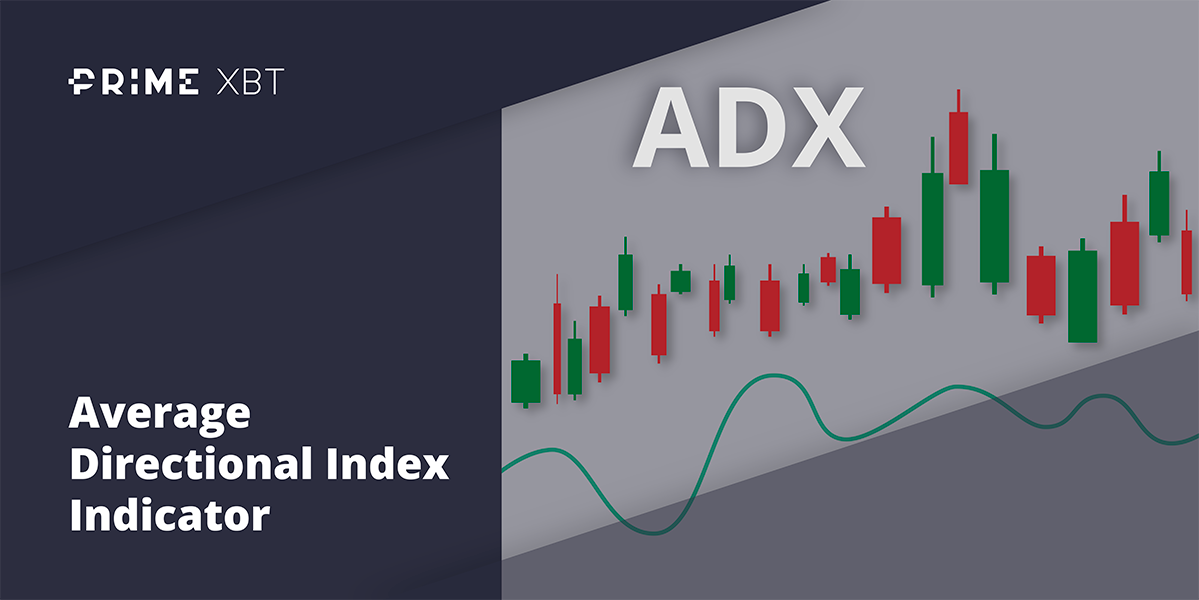The markets started the week on a wild note, with reverberations felt across the entire financial markets across the world, as global stocks continued to tank on the back of the fallout between the Western countries and Russia because of Russia’s invasion of Ukraine.
As more severe sanctions were slapped on Russian banks with the removal from SWIFT and heavy sanctions on Russia companies and the wealthy, the Russian Ruble plunged to its historical low of 120 against the USD. The Russian central bank, unable to intervene in the FX markets due to its foreign reserves being seized, had to raise its interest rate to 20% from 9.5%, and told export-focused companies to sell foreign currency in order to stem the Ruble’s collapse.
To prevent carnage in equity values, the Moscow Stock Exchange was closed for the entire week, while European shares were heavily pounded, with selling intensified on Friday after rumours that Russian troops managed to seize control of Europe’s largest power plant in Ukraine. The Euro-50 Index fell a further 11% on its fourth week of decline, with around 5% of it contributed by Friday alone. With European stocks crumbling, the EUR/USD dropped like a rock, easily breaking the $1.10 level on Friday, and subsequently breaking even the $1.09 level in Asia trading today.
It was not any better over in the US, with the three major US stock indices losing ground for the fourth week as well on volatile trading. The Dow lost 1.5% last week, the S&P 500 dropped 1.3%, while tech stocks were hit the hardest – the Nasdaq lost 2.8%.
The developments in Ukraine overshadowed a better-than-expected February jobs report released on Friday. The US economy added 678,000 jobs last month, above the 440,000 expected by economists, while the unemployment rate ticked down to 3.8%. However, the stronger numbers did nothing to help the US stock market.
This is the last jobs report before the FED meeting next Wednesday, where the central bank is expected to begin hiking interest rates. FED Chair Powell however, began to dial back on hawkish remarks and said last week that he is leaning toward supporting a single 25-basis point hike in March, acknowledging highly uncertain effects of the Russian war on Ukraine.
The bond market seemed to concur that US interest rates would not spike as much as expected, with the 10-year Treasury yield slipping from over 1.9% on Monday to 1.73% by the end of Friday.
Some experts however, do not think the FED would reduce the pace of rate hikes, citing even higher inflation ahead due to supply chain disruptions because of the war. The higher rate of inflation is already being felt across the entire commodity complex, with energy and commodity prices soaring to levels not seen in the last decade due to the importance of Russia as a net export country in basic commodities.
Commodity Prices Spike To Historical Levels
The one commodity currently in the limelight is Oil. As Russia accounts for around 12% of the world’s oil export, Oil prices soared to 11-year highs, with Brent Crude gaining around 25% early week to hit a high of $119 pb and WTI Crude Oil gaining 27% to a high of $115. The outlook for oil prices remains skewed to the upside as long as the war situation is not resolved. In last week’s regular OPEC+ monthly meeting, the effects of the current war were not mentioned. The oil cartel decided to hold output steady and stick with its Russia-backed oil production deal. Indeed, after the Western countries are revealed to be considering banning Russian oil on Sunday night, Oil prices gapped up more than $10 to start the new week early morning in Asia trading, with Brent jumping to $137 when trading started, while WTI Crude opened at $128. The pair have retreated off their highs at the time of writing, but the retracement is not expected to last very long.
Agricultural commodity prices also surged higher, with Wheat price surging past its 15-year high to $13.40 as Russia and Ukraine together commands about 30% of global wheat supply.
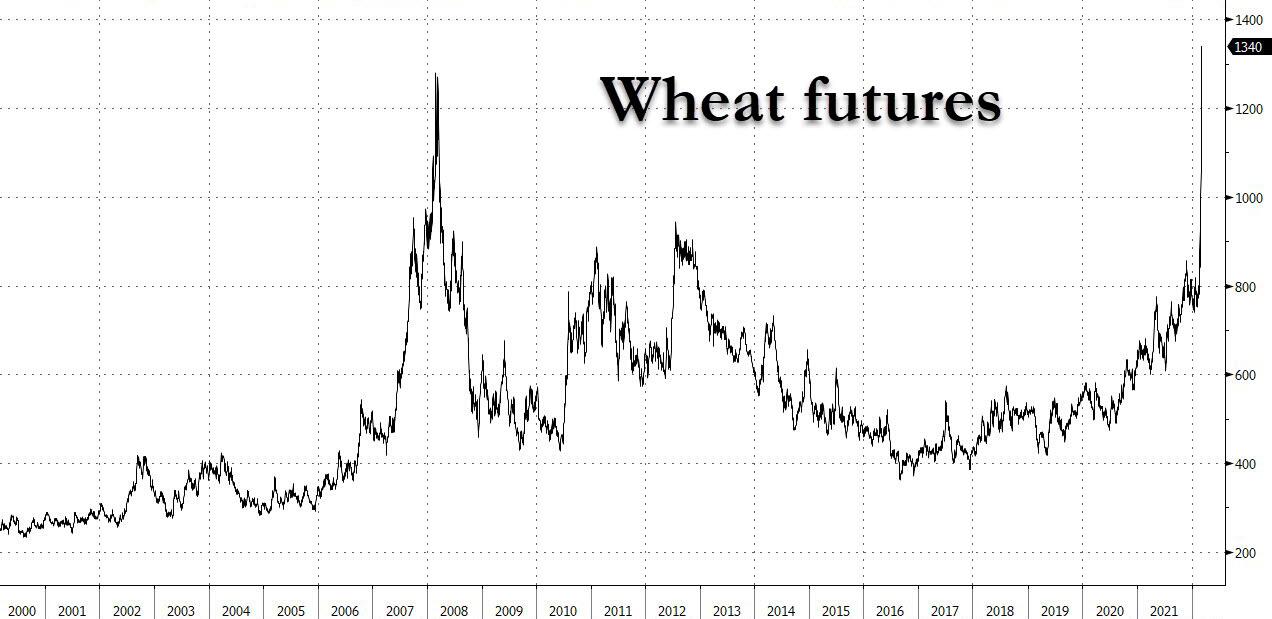
The price of Wheat went “limit up” several times, gaining a record 25% in just one-week, leading the commodity index to its biggest weekly jump in 60 years. The last time the commodity index jumped this much in a week was in 1974.
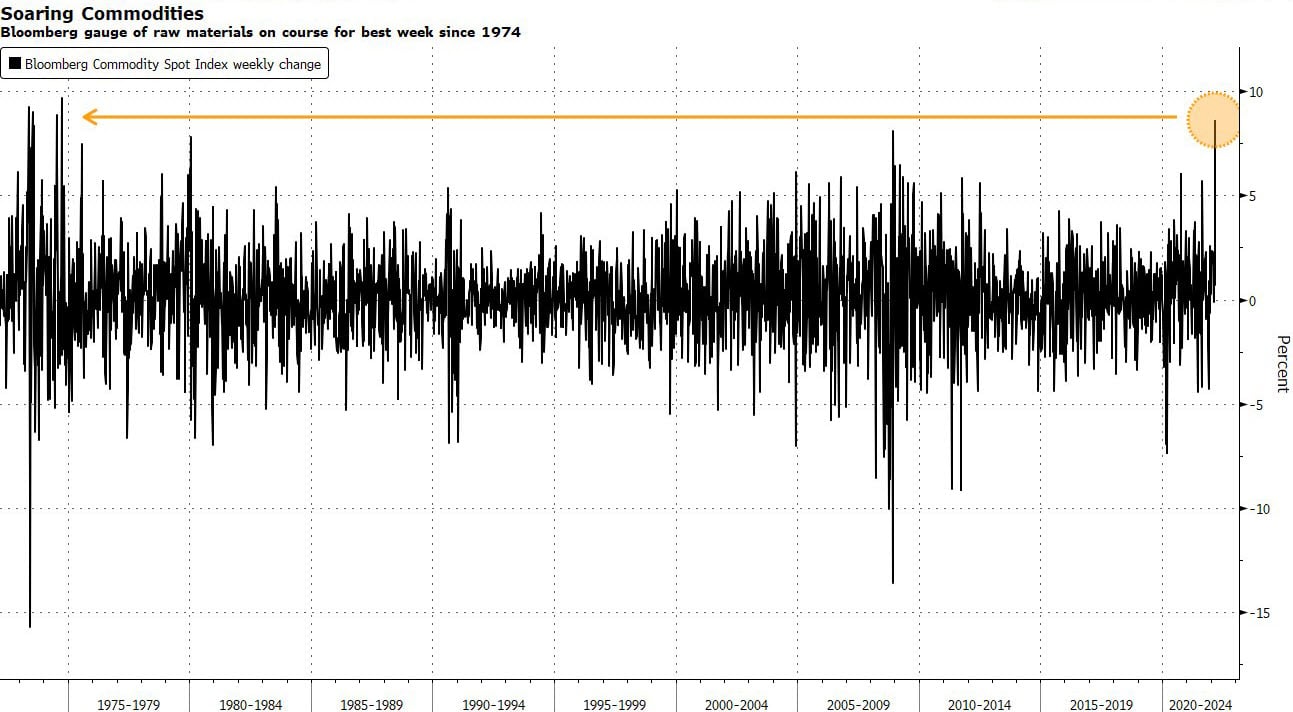
Not to be outshone by the rest, the safe haven asset with the longest history, Gold, also rose 4.7% last week, while Silver made a similar gain of around 4%. Both metals start the week looking bullish, with Gold flirting with the $2,000 level, while Silver has crossed $26.
Hedge risks with precious metals
Cryptocurrencies on the other hand, didn’t had as straight forward a week as other commodities, with these blockchain assets not able to hold on to their early week gains. BTC led the crypto market higher initially, jumping around 15% to $44,000, but could not keep up with the upside momentum and eventually ended the week giving back almost all of its gains.
The Russian Bid Sent BTC Jumping 15% Early Week
With new wave of sanctions hitting Russian banks and the Ruble free-falling, Russians rushed to convert their fast-declining wealth into cryptocurrencies, specifically, BTC, at the start of the week.
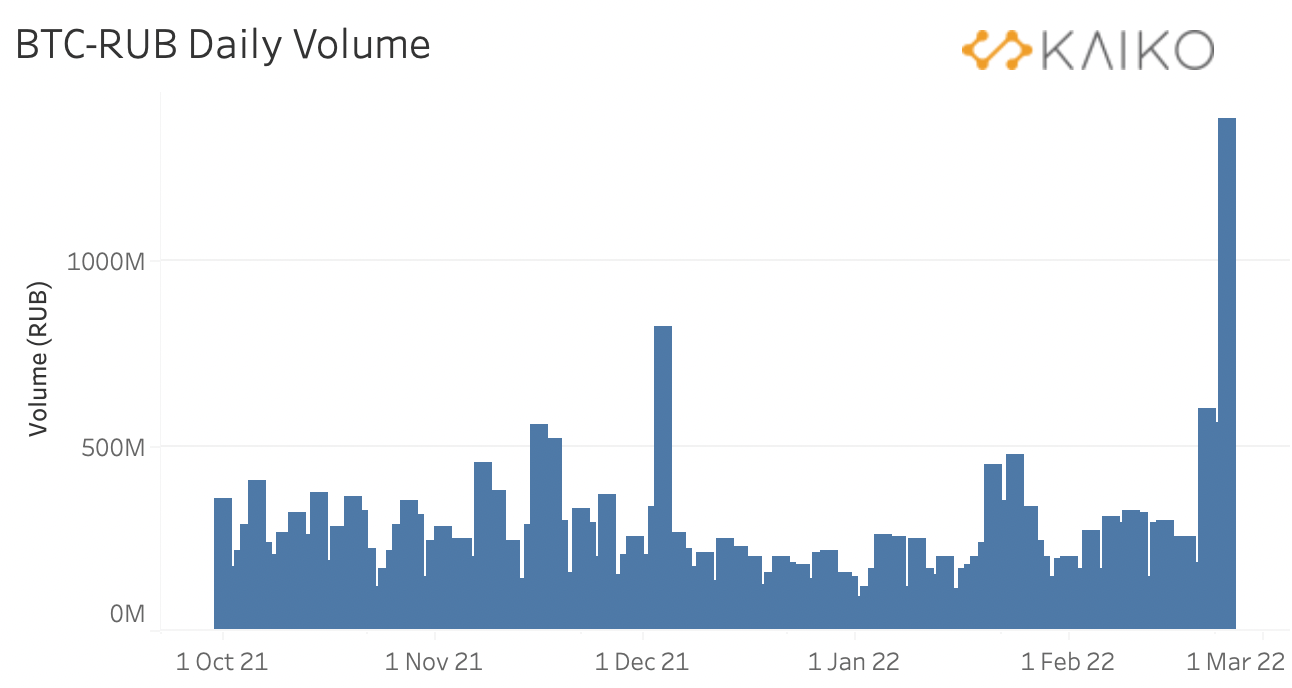
Data shows that trading volumes between the Russian Ruble and BTC increased to a nine-month high as the country’s fiat currency plunged to record lows, with BTC trading volume surging to nearly 1.5 billion RUB on Thursday, hitting its highest level since May.
With an exodus of Rubles into BTC, the price of BTC quoted in Ruble terms surged tremendously, with the price of BTC trading almost 40% higher in Russia than on overseas exchanges.
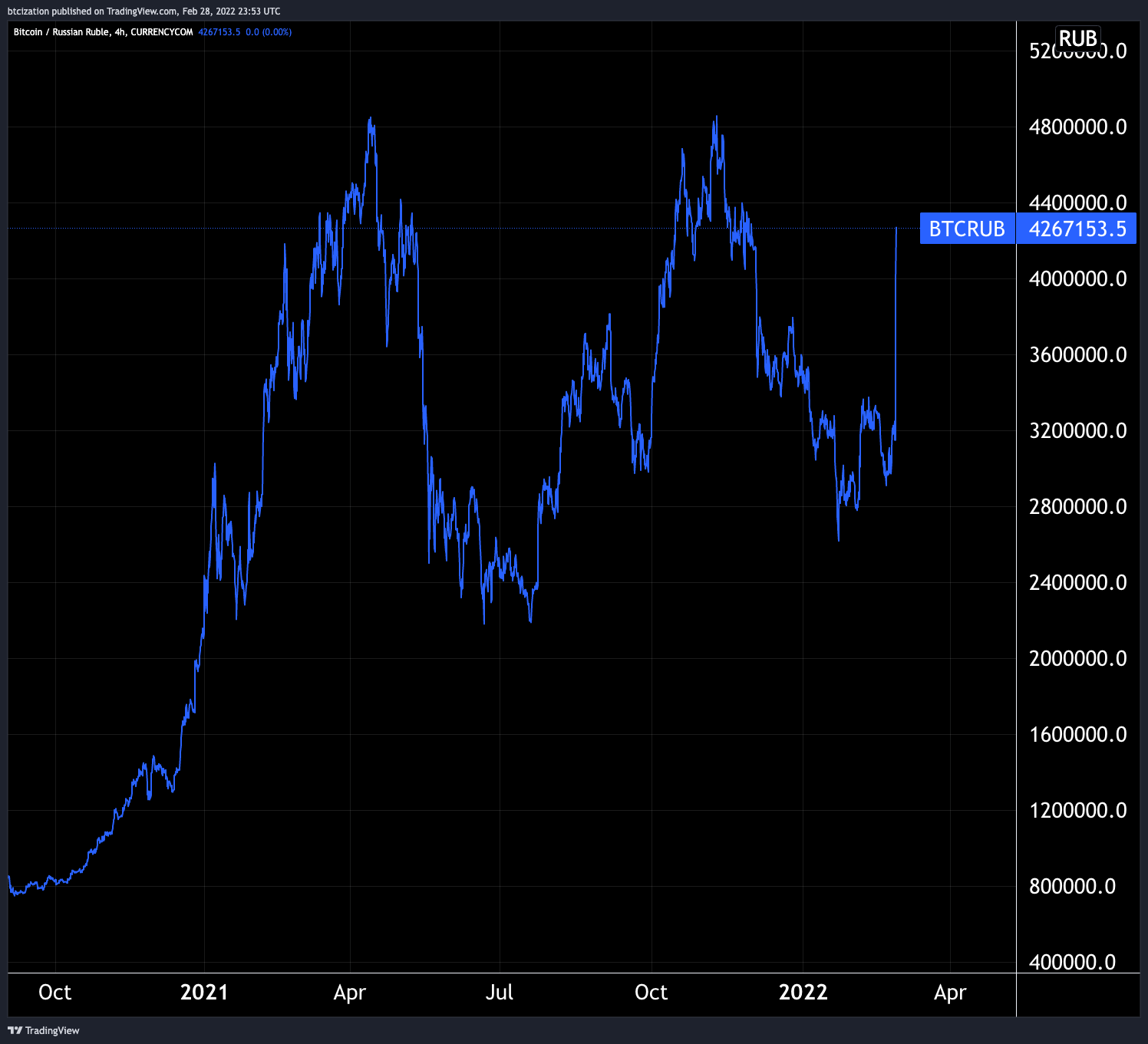
This demand has led the price of BTC higher overseas eventually, with BTC jumping 15% on Tuesday in a quick surge to $44,000, liquidating around $300 million worth of crypto shorts.
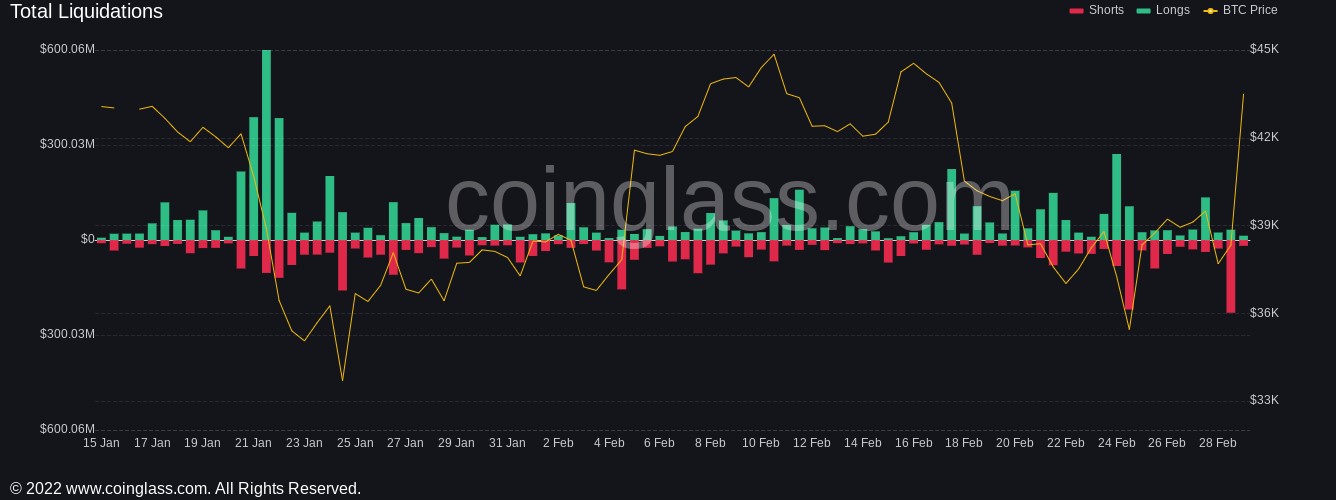
BTC Retreats While Gold Edges Higher
However, after revelations that the usage of cryptocurrencies would not be able to help Russian users avoid sanctions, the price of cryptocurrencies dropped back by the end of the week.
The price of BTC fell around 8% on Friday to a low of $38,600, while altcoins suffered more, losing an average of 15%. With no negative news coming out from the sector, the decline is widely viewed as a result of risk-off sentiment prevailing as stock markets globally crumbled.
Early week hopes for BTC price action to decouple from that of the stock market have been dashed as the price of BTC fell in lockstep with the US stock market again on Friday.
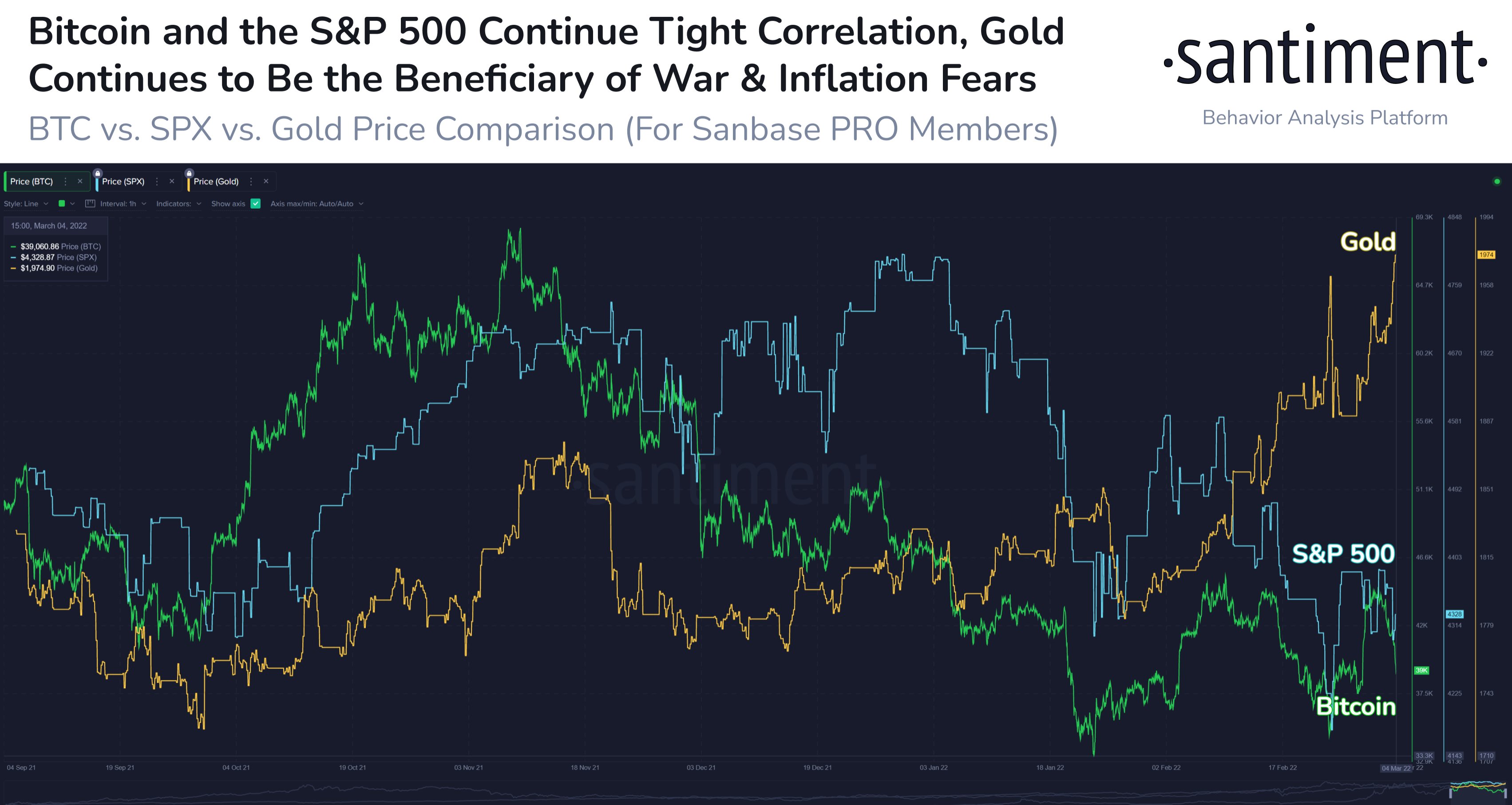
Another reason for the drop in BTC price could be the Russian demand waning as various centralised crypto exchanges have agreed to sanction Russian users.
With BTC price’s trajectory mirroring that of the stock markets which have come under heavy pressure from the ramifications of war, it appears that Gold has become the better safe haven asset at the moment.
Long-Term Holders Not Selling BTC Yet
Despite the disappointing price action from BTC in the midst of war, long-term BTC holders are sitting tight and not selling their prized asset.
A check on the movement of BTC suggests that 61.72% of BTC which has been held for more than 1-year have not moved. This percentage of hodling has been rising since the beginning of 2022 and has picked up pace as the Russia-Ukraine war breaks out, showing the strong belief that BTC proponents have about their favourite wealth preservation asset at the moment. An increase in the percentage of investors holding reduces the supply of BTC available for sale, which may shield the price of BTC from falling further.
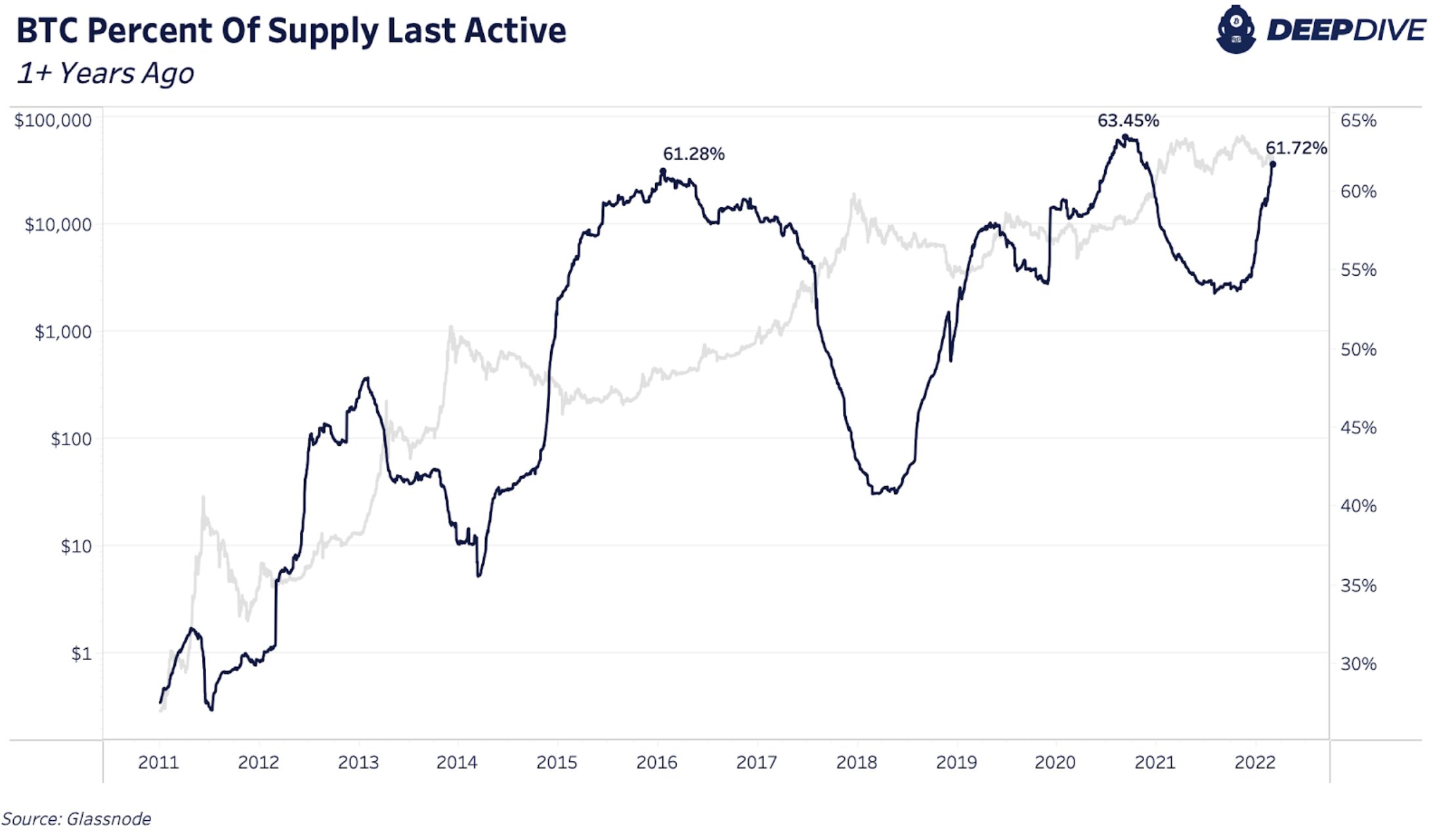
LUNA’s Algometric Stablecoin Gains Popularity
Despite jumping a good 15% last Tuesday to lead the crypto market higher last week, BTC was not the best performing cryptocurrency by a far margin. The large cap token that was the top performer was LUNA, the native token of the Terra blockchain.
Keeping up with the pace of its rise the week before, LUNA rose 38% last week, rising from $70 on Monday last week to top $97 before retracing to $82 on Friday. Even after this pullback, the token has doubled from its low of $47 barely two weeks ago. What is driving this fantastic outperformance when the rest of the crypto market has been reeling?
Over the past seven days, LUNA’s TVL has increased 26.9% and sits well above third-placed BNB Smart Chain (BSC) at $12.03 billion worth of TVL. The increase in TVL on LUNA could be due to an increase in demand of its algorithmic stablecoin UST. Users need to lock up their LUNA token n order to print more UST. As the utility for decentralised money gains spotlight due to the weaponization of fiat currency by various governments recently, the decentralised nature of the UST has made it very popular, with demand for the stablecoin increasing by more than 14.5% to 12.92 million tokens in February alone (even before the Russian war). This means that an extra corresponding amount of LUNA tokens have been locked out of circulation last month. With the new sanctions on Russia last week, demand for UST could escalate further since its creation and usage is through Decentralised Finance which is anonymous and censorship resistant.
The total staked value of the LUNA token has also exceeded that of ETH last week, with LUNA flipping ETH to second place as the blockchain with the highest valued staked. SOL remains as the blockchain with the highest amount of staking.
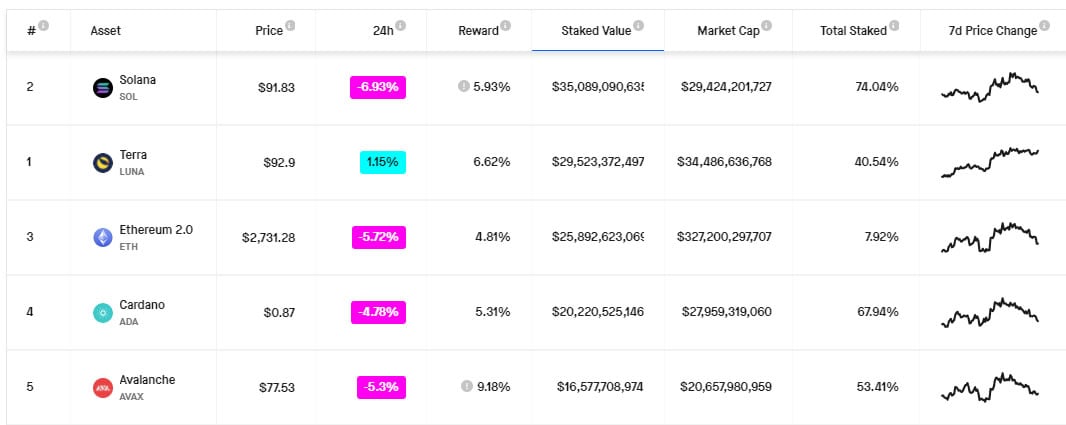
While the initial catalyst that started LUNA’s gravity defying rally was the burning of 29 million LUNA tokens by the Terra protocol in late February, which reduced its circulating supply by about 2%, the rising demand for the UST token on the back of geopolitical tensions could continue to squeeze the price of LUNA higher.
Interestingly, the LUNA Foundation announced over the weekend that it would convert 5 million LUNA tokens from its treasury to UST in order to meet overwhelming demand for the stablecoin. While the amount of LUNA converted is not a large percentage of its supply, this incident further proves that the algorithmic stablecoin on the Terra blockchain is currently experiencing a huge demand, which is beneficial to the price of LUNA.

